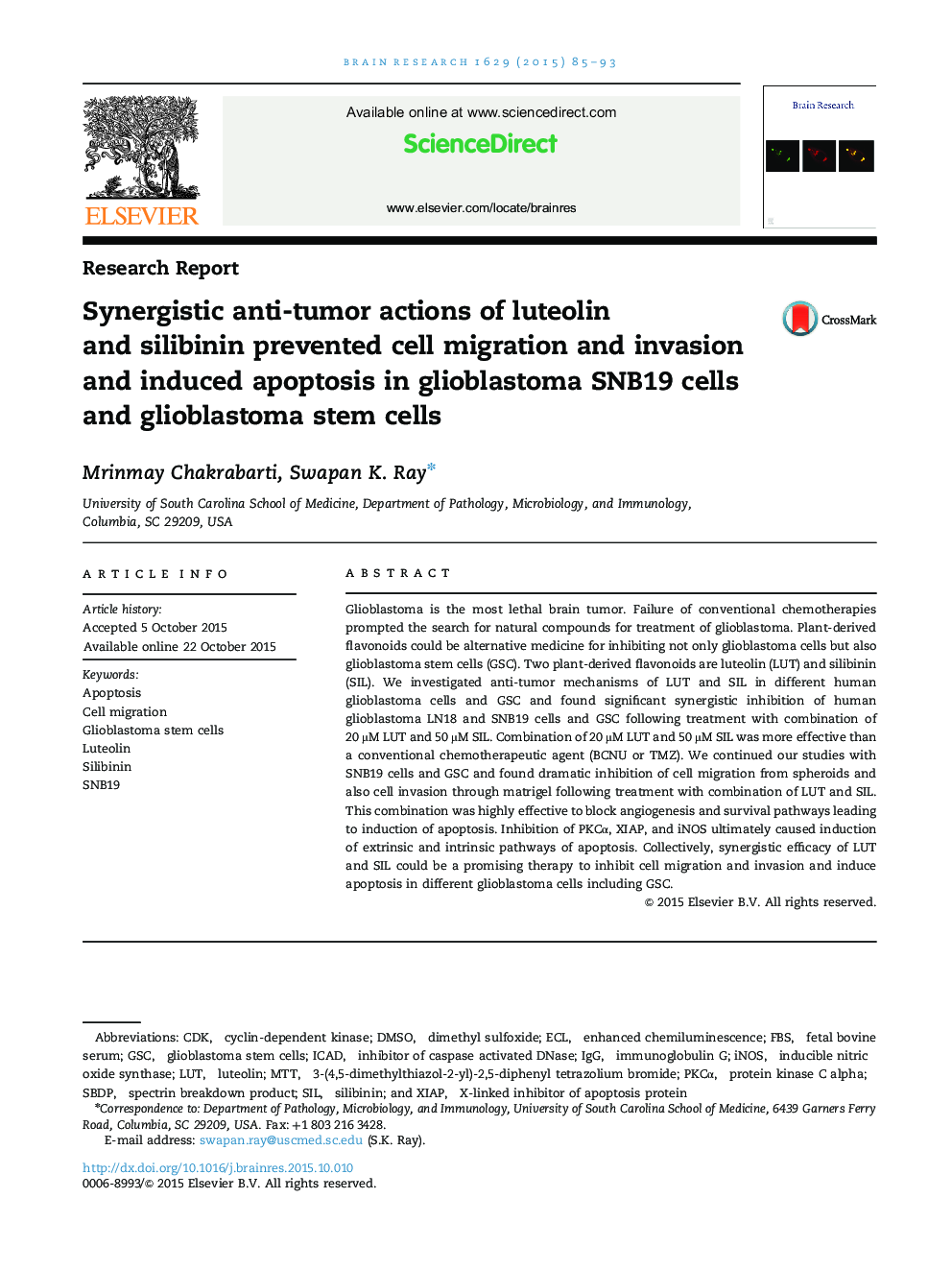| کد مقاله | کد نشریه | سال انتشار | مقاله انگلیسی | نسخه تمام متن |
|---|---|---|---|---|
| 6262784 | 1645516 | 2015 | 9 صفحه PDF | دانلود رایگان |

- LUT and SIL worked synergistically to inhibit growth of SNB19 and GSC cells.
- Combination of LUT and SIL inhibited cell migration and invasion.
- Combination of LUT and SIL blocked angiogenic and survival pathways.
- LUT and SIL targeted PKCα and iNOS, respectively, to initiate apoptosis.
- Combination of LUT and SIL promoted extrinsic and intrinsic pathways of apoptosis.
Glioblastoma is the most lethal brain tumor. Failure of conventional chemotherapies prompted the search for natural compounds for treatment of glioblastoma. Plant-derived flavonoids could be alternative medicine for inhibiting not only glioblastoma cells but also glioblastoma stem cells (GSC). Two plant-derived flavonoids are luteolin (LUT) and silibinin (SIL). We investigated anti-tumor mechanisms of LUT and SIL in different human glioblastoma cells and GSC and found significant synergistic inhibition of human glioblastoma LN18 and SNB19 cells and GSC following treatment with combination of 20 µM LUT and 50 µM SIL. Combination of 20 µM LUT and 50 µM SIL was more effective than a conventional chemotherapeutic agent (BCNU or TMZ). We continued our studies with SNB19 cells and GSC and found dramatic inhibition of cell migration from spheroids and also cell invasion through matrigel following treatment with combination of LUT and SIL. This combination was highly effective to block angiogenesis and survival pathways leading to induction of apoptosis. Inhibition of PKCα, XIAP, and iNOS ultimately caused induction of extrinsic and intrinsic pathways of apoptosis. Collectively, synergistic efficacy of LUT and SIL could be a promising therapy to inhibit cell migration and invasion and induce apoptosis in different glioblastoma cells including GSC.
Journal: Brain Research - Volume 1629, 10 December 2015, Pages 85-93